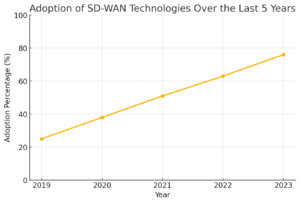Contemporary Challenges in Retail Surveillance.
Although the advantages associated with retail surveillance, retailers encounter several challenges in implementing these systems. Some of the prevailing challenges include:
- Privacy Concerns:
- Customers and staff harbor apprehensions regarding privacy when video surveillance and other monitoring technologies are employed.
- Shops must adopt transparency in the use of surveillance technologies, assuring compliance with stringent data privacy regulations.
- Technological Limits:
- While technology in retail surveillance is advancing, existing systems still grapple with certain limitations.
- Facial recognition technology may encounter challenges in accuracy, and cameras may require enhancements for optimal performance in low-light conditions.
- Cost Implications:
- Establishing a comprehensive retail surveillance system can incur substantial costs, particularly for smaller stores with limited financial resources.
- Retailers face the challenge of balancing the expenses associated with these technologies against the potential benefits they can yield.
- Integration Complexity:
- Retail surveillance systems often face compatibility issues with a retailer’s existing systems or technology infrastructure.
- Integration can be intricate, especially for merchants with intricate IT systems, posing a challenge in achieving seamless coordination.
- Cybersecurity Risks:
- Retail surveillance systems are susceptible to cyber threats such as hacking or malware attacks.
- It is imperative for shops to ensure the robust security of their surveillance systems, safeguarding data from potential breaches and cyber intrusions.
Addressing these challenges requires a concerted effort from retailers to navigate privacy concerns transparently, invest in overcoming technological limitations, strategically manage costs, streamline integration processes, and prioritize cybersecurity measures. Successfully addressing these challenges ensures the effective implementation of retail surveillance systems that meet both security and privacy standards.
Understanding Retail Surveillance
Retail surveillance encompasses a set of strategies and technologies employed by retailers to enhance security, operational efficiency, and overall customer experience. Below, we delve into the significance and diverse aspects of retail surveillance:
The Imperative for Retail Surveillance
Retail surveillance is imperative for a multitude of reasons, including:
- Crime Prevention:
- Retail establishments are susceptible to various crimes, such as theft, burglary, and internal staff theft.
- Surveillance systems act as a deterrent to criminal behavior and provide crucial evidence in the event of a crime.
- Safety Assurance:
- Ensures the safety of both customers and staff by monitoring for potential safety concerns like spills or incidents.
- Identifies suspicious behavior that might indicate a threat to safety, allowing for prompt intervention.
- Operational Efficiency:
- Monitors shop operations to identify inefficiencies, aiding merchants in streamlining procedures and boosting profitability.
- Customer Experience Enhancement:
- Observes consumer behavior and preferences, enabling shops to offer personalized recommendations and enhance overall customer satisfaction.
- Compliance Management:
- Assists shops in adhering to legal requirements and industry standards, including data protection and security regulations.
- Loss Prevention:
- Addresses the significant financial losses retailers face annually due to theft, fraud, and other losses.
- Detects suspicious activities in real-time, notifying security staff and reducing financial losses.
- Liability Protection:
- Provides crucial evidence in case of liability claims, such as slip-and-fall accidents or customer injuries.
- Helps shops avoid costly litigation and insurance claims by offering documented proof.
- Team Member Monitoring:
- Monitors staff behavior to ensure adherence to corporate policies and procedures.
- Reduces the occurrence of team member theft, enhances efficiency, and ensures the delivery of excellent customer service.
In summary, retail surveillance is a comprehensive approach that goes beyond security, playing a pivotal role in enhancing operational efficiency, customer satisfaction, and legal compliance. It acts as a multifaceted tool for retailers to address challenges, mitigate risks, and create a secure and pleasant shopping environment.
Merchtel Solution for AI Retail Surveillance
In response to the growing demand for real-time, precise identification, and response to security risks, Merchtel’s AI solutions with “Preferred Partners” have become increasingly indispensable for the retail sector. These technologies empower retailers to analyze data locally, significantly reducing latency and enhancing decision-making capabilities. Merchtel’s AI solutions are at the forefront of revolutionizing surveillance techniques in retail, incorporating advanced features such as object and facial recognition, queue management, predictive analytics, and automated alarms. These technologies play a pivotal role in minimizing theft and fraud losses, optimizing staff resources, and elevating the overall customer experience. As a result, Merchtel’s AI stands out as an essential tool for retailers aiming to establish robust systems capable of addressing both present and future security challenges. Several Merchtel AI solutions can be implemented in retail surveillance to enhance security and mitigate losses.
Here are some examples:
- Object Recognition:
- Merchtel’s AI systems offer real-time recognition of items such as products or shopping carts.
- This aids retailers in swiftly detecting suspicious behavior, such as theft or abandoned items.
- Face Recognition:
- Merchtel’s AI systems provide real-time identification of individuals, including known shoplifters or staff members.
- This helps retailers monitor and swiftly respond to suspicious activities, reducing theft losses.
- Queue Management:
- Merchtel’s systems are utilized in real-time to monitor consumer flow and wait times.
- This enables stores to optimize staffing levels, leading to reduced customer wait times.
- Predictive Analytics:
- Merchtel’s systems analyze historical data to predict future behavior, such as potential times and locations for theft.
- Retailers can proactively address security concerns, minimizing losses through informed decision-making.
- Automated Alerts:
- Merchtel’s systems can be configured to automatically generate alerts for specific events, such as the movement of items or when a queue reaches a certain length.
- This feature enables stores to respond swiftly to security issues, enhancing overall customer service.
In essence, Merchtel’s AI solutions for retail surveillance represent a comprehensive approach to security, leveraging cutting-edge technologies to empower retailers in creating safer, more efficient, and customer-centric environments.
Use Cases for Merchtel AI in Retail Surveillance
Below described are the Use Cases of Merchtell AI in Retail Surveillance:
Object Detection and Recognition in Retail Surveillance
Merchtel introduces cutting-edge AI object detection and recognition technology, leveraging the power of AI to revolutionize retail surveillance. Here’s an overview of how Merchtel’s system and solutions transforms various aspects of retail monitoring:
Object Detection and Recognition Processes:
- Data Collection:
- Retailers accumulate extensive data, including photos and video footage, to train AI models.
- The data collected is diverse and representative of the retail environment.
- Data Annotation:
- Retailers annotate their data, marking objects of interest in images or video recordings, such as products or shopping carts.
- AI models are trained using this annotated data to recognize and classify objects accurately.
- Model Training:
- Machine learning methods are employed to train AI models, utilizing annotated data.
- Algorithms are fine-tuned to enhance object detection and recognition accuracy and speed.
- Model Deployment:
- Retailers install AI models on local devices like cameras or sensors for real-time item detection and recognition.
- Real-world Examples:
- *
Behavioral Analysis and Anomaly Detection:
Merchtel AI goes beyond object detection. It includes behavioral analysis and anomaly detection in retail surveillance.
- Data Collection:
- Retailers gather vast amounts of data, primarily video footage, to train AI models.
- The data indicates customer and staff behavior in the retail environment.
- Data Annotation:
- Annotated data includes marking behaviors in video footage, such as queue formation, product engagement, or suspicious actions.
- Model Training:
- Machine learning methods are used to train AI models, enhancing behavioral analysis and anomaly detection accuracy and speed.
- Model Deployment:
- AI models are installed on local devices for real-time behavioral analysis and anomaly detection.
Real-world Examples:
*
Queue Management:
Merchtel AI is also pivotal in implementing efficient queue management in retail surveillance.
- Data Collection:
- Retailers gather video footage where long lines are likely to form.
- Data indicates client flow in the retail environment.
- Data Annotation:
- Annotated data designates queues of interest in video footage, such as checkout lines or customer service lines.
- Model Training:
- Machine learning algorithms are used to train AI models, optimizing queue management accuracy and speed.
- Model Deployment:
- AI models are installed on local devices for real-time queue management.
Real-world Examples:
- *
Staff Monitoring and Performance Optimization:
Merchtel AI extends to staff monitoring and performance optimization in retail surveillance.
- Data Collection:
- Retailers gather data, including camera footage and personnel work schedules, to train AI models.
- Data represents team member behavior in the retail environment.
- Data Annotation:
- Annotated data marks staff activities of interest in video footage, such as customer interactions or shelf replenishing.
- Model Training:
- Machine learning methods train AI models, optimizing staff monitoring and performance improvement accuracy and speed.
- Model Deployment:
- AI models are installed on local devices for real-time staff monitoring and performance improvement.
Real-world Examples:
- *
Merchtel AI Object Detection and Recognition, combined with behavioral analysis, anomaly detection, queue management, and staff monitoring, offers a comprehensive solution for retailers seeking to enhance security, optimize operations, and improve the overall customer experience.



